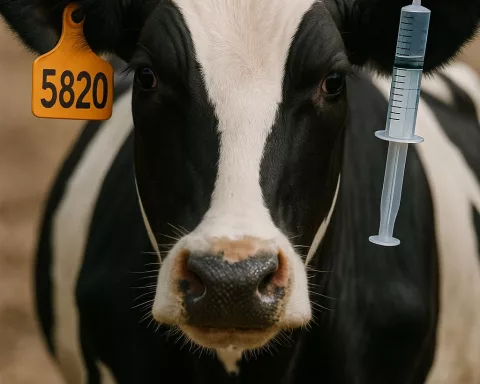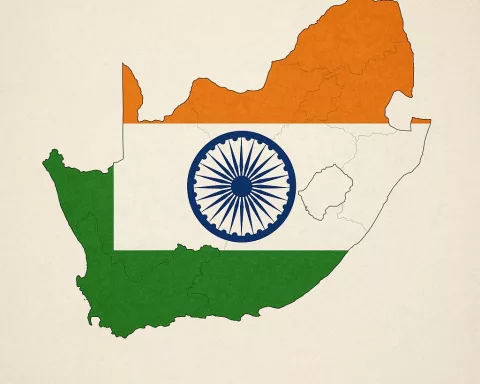South Africa is launching a new two-pot retirement system on September 1, 2024, designed to help people balance their immediate financial needs with their future savings. This system splits retirement savings into two parts: one-third can be accessed before retirement, while two-thirds is saved for later. While it offers flexibility for urgent expenses, many people are withdrawing money early, which raises concerns about their long-term financial security. Despite these challenges, there is hope that this system can strengthen the economy by encouraging people to think carefully about their financial choices. Overall, it aims to empower citizens while protecting their futures.
What is South Africa’s two-pot retirement system?
South Africa’s two-pot retirement system, launching on September 1, 2024, divides retirement savings into two parts: one-third is accessible before retirement, while two-thirds remains untouched. This innovative approach aims to balance immediate financial needs with long-term security, promoting financial stability for individuals.
Shifting the Financial Paradigm
On September 1, 2024, South Africa introduced a pioneering two-pot retirement system, marking a pivotal moment in the country’s economic reform efforts. This system, designed to address both immediate and future financial needs, has sparked considerable interest and debate among financial experts. The initiative seeks to provide individuals with liquidity to manage present-day financial challenges while ensuring their long-term retirement savings remain secure.
The two-pot system stands out for its innovative approach to balancing short-term access with long-term security. It divides retirement contributions into two distinct parts: a one-third portion accessible before retirement and a two-thirds portion that remains untouched until retirement age. This structure aims to offer individuals the flexibility to address urgent financial demands without undermining their future financial stability.
However, the implementation of the two-pot retirement system hasn’t been without its challenges. While it promises greater financial accessibility, it also raises concerns about the sustainability of retirement savings. The system’s complexity, coupled with human behavior and economic pressures, has fueled an ongoing debate about its efficacy in safeguarding both present and future financial well-being.
Navigating Financial Challenges
Since its inception, the two-pot system has faced hurdles as billions have been withdrawn from retirement funds. According to reports from The Daily Investor, Momentum—a significant player in the financial sector—has processed over 150,000 withdrawal claims, amounting to roughly R2.5 billion. This trend is not isolated to Momentum alone; several asset management firms have reported similar patterns, indicating a potential risk to the financial stability of those utilizing early withdrawals.
The reasons behind these withdrawals are as diverse as they are pressing. People are tapping into their retirement funds to alleviate financial stress, manage debt, fund children’s education, and address unexpected emergencies. These motivations highlight the necessity of the system, yet financial experts warn of the possible long-term impacts. A significant portion of withdrawals—40%—comes from individuals aged 40-49, raising concerns about their ability to replenish these funds before retirement.
Financial advisors strongly recommend that individuals facing financial difficulties seek professional guidance prior to withdrawing from their retirement savings. They emphasize that withdrawal should be a last resort due to the potential tax consequences and reduced future security. Financial institutions are actively involved in educating the public on these matters, hoping to encourage a more cautious approach to accessing retirement funds.
Potential for Economic Growth
Despite the challenges, there is optimism regarding the two-pot system’s potential to enhance South Africa’s economy over the long term. By allowing only a fraction of retirement funds to be accessed before retirement, the system inherently limits excessive spending. However, concerns remain that repeated withdrawals could erode retirement security, counteracting the system’s intended benefits.
A closer examination reveals that the system’s impact is not uniform across different income groups. Discovery, a leading financial institution, observes significant disparities in withdrawal behaviors between low-income and high-income earners. Approximately 40% of low-income individuals, earning less than R120,000 annually, have made withdrawals compared to just 4% of high-income earners with over R1 million annually. While higher withdrawal rates exist among lower-income individuals, their access is often restricted by the R2,000 minimum savings requirement, which poses a barrier for many.
This disparity underscores the broader challenges faced by low-income earners who struggle to utilize the system without jeopardizing their future financial security. The dilemma reflects a broader need for policies that ensure financial inclusivity while maintaining the integrity of retirement savings.
Philosophical Reflections on Financial Duality
The two-pot system’s ambition to balance immediate needs with future security resembles historical and philosophical quests for equilibrium. Similar to the Renaissance, which sought harmony between scientific inquiry and artistic expression, this system strives to mediate between current financial demands and long-term stability.
The complexity of the two-pot system also mirrors philosophical movements that explore duality, like existentialism, which contemplates the tension between freedom and responsibility. The freedom to access part of one’s retirement savings is balanced by the responsibility to secure a future. This philosophical dynamic is reflected in financial decision-making, where individuals must weigh the benefits of short-term access against potential long-term loss.
Ultimately, South Africa’s two-pot retirement system represents a bold initiative in financial management, aiming to empower citizens while protecting their futures. As the system evolves, financial institutions and policymakers continue to fine-tune their strategies to achieve a balance that honors immediate needs without sacrificing future security. As individuals gain more insight and adopt strategic financial practices, the hope is that the two-pot system will emerge as a catalyst for positive economic transformation in South Africa.
FAQ on South Africa’s Two-Pot Retirement System
What is South Africa’s two-pot retirement system?
The two-pot retirement system is an innovative financial framework launching on September 1, 2024, which divides retirement savings into two distinct parts: one-third is accessible before retirement, while two-thirds remains untouched until retirement age. This system aims to help individuals balance their immediate financial needs with their long-term savings, promoting overall financial stability.
Why was the two-pot retirement system introduced?
This system was introduced to address the dual challenge of providing liquidity for immediate financial demands while ensuring individuals maintain a secure retirement fund. It aims to empower citizens to make informed financial decisions while protecting their future financial security.
What challenges has the two-pot retirement system faced?
Since its inception, the two-pot system has encountered challenges, including significant withdrawals from retirement funds. Reports indicate that over 150,000 withdrawal claims have been processed, amounting to approximately R2.5 billion. These withdrawals raise concerns about long-term financial stability for individuals, as many are drawing from their retirement savings to meet urgent financial needs.
How do withdrawal rates vary among different income groups?
Withdrawal behaviors differ markedly between income groups. About 40% of individuals earning less than R120,000 annually have made withdrawals, whereas only 4% of high-income earners with incomes over R1 million have done so. This disparity highlights the challenges faced by lower-income earners who may need to access their funds but face barriers, such as the R2,000 minimum savings requirement.
What advice do financial experts give regarding withdrawals from retirement savings?
Financial advisors recommend that individuals experiencing financial difficulties seek professional guidance before withdrawing from their retirement savings. They emphasize that withdrawals should be a last resort due to the potential tax implications and the risk of jeopardizing future financial security.
What is the long-term outlook for the two-pot retirement system?
While there are concerns over the sustainability of retirement savings due to early withdrawals, there is optimism regarding the system’s potential to strengthen South Africa’s economy in the long term. By limiting excessive access to retirement funds, the two-pot system may encourage better financial habits among citizens, fostering a more robust economic environment as individuals become more strategic in managing their financial futures.












